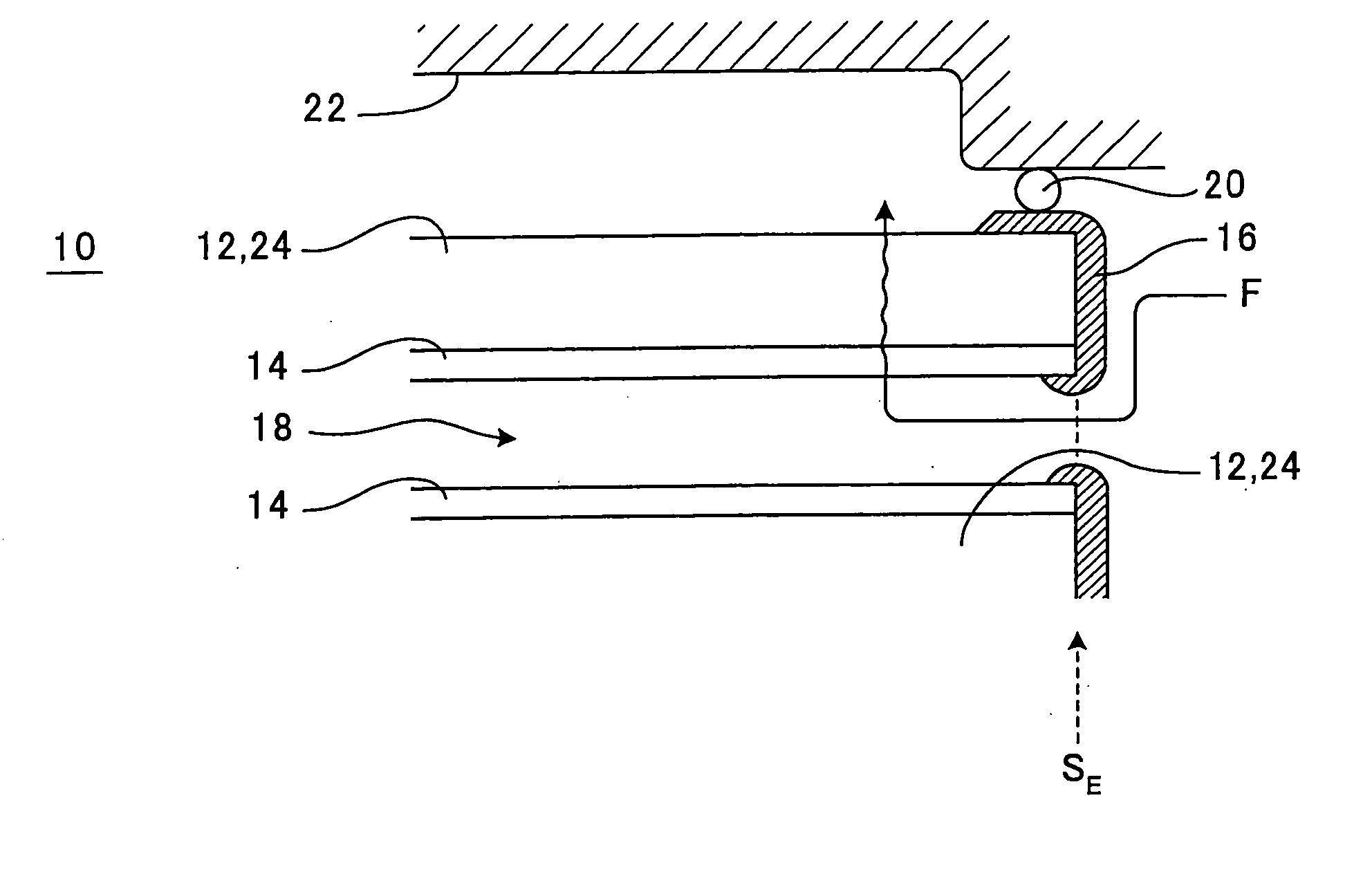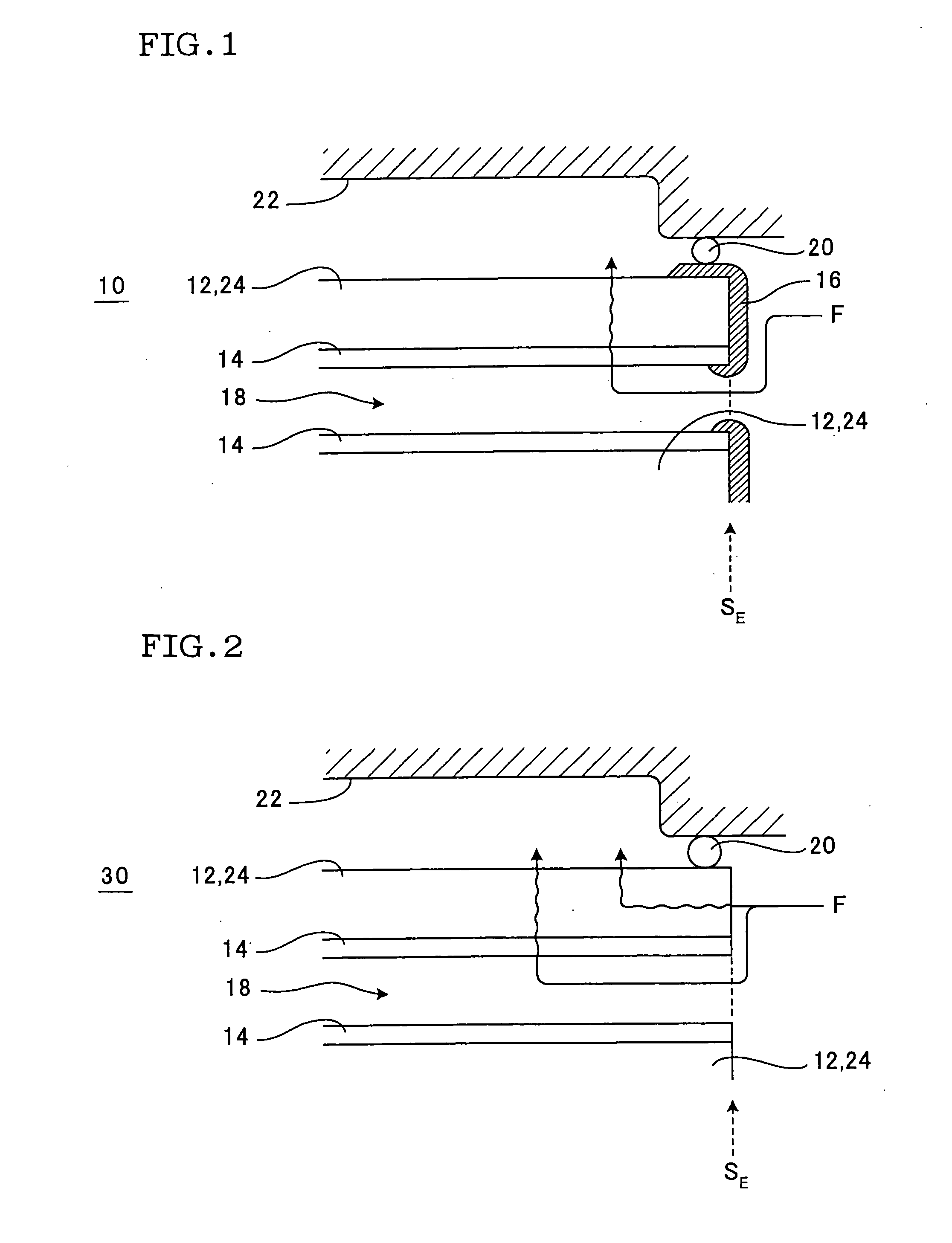Ceramic filter
- Summary
- Abstract
- Description
- Claims
- Application Information
AI Technical Summary
Benefits of technology
Problems solved by technology
Method used
Image
Examples
examples
[0073] The ceramic filter of the present invention is described specifically below by way of Examples. However, the Examples indicate some of the embodiments of the present invention and the ceramic filter of the present invention should not be interpreted based only on these Examples.
[Base Body]
[0074] In Examples and Comparative Examples, a base body constituted as follows was used as the base body of ceramic filter. The base body was a tubular base body of 10 mm (outer diameter), 7 mm (inner diameter) and 500 mm (length), made of an alumina porous material having an average pore diameter of 10 μm as measured by mercury porosity.
[0075] The base body was produced as follows. At first, to 100 parts by mass of alumina particles (as aggregate particles) having an average particle diameter of 50 μm was added 20 parts by mass of frit (as a sintering aid). Further, water, a dispersing medium and a thickener were added, followed by mixing and kneading, to obtain a puddle. The puddle was...
PUM
| Property | Measurement | Unit |
|---|---|---|
| Fraction | aaaaa | aaaaa |
| Fraction | aaaaa | aaaaa |
| Fraction | aaaaa | aaaaa |
Abstract
Description
Claims
Application Information
 Login to View More
Login to View More - R&D
- Intellectual Property
- Life Sciences
- Materials
- Tech Scout
- Unparalleled Data Quality
- Higher Quality Content
- 60% Fewer Hallucinations
Browse by: Latest US Patents, China's latest patents, Technical Efficacy Thesaurus, Application Domain, Technology Topic, Popular Technical Reports.
© 2025 PatSnap. All rights reserved.Legal|Privacy policy|Modern Slavery Act Transparency Statement|Sitemap|About US| Contact US: help@patsnap.com


